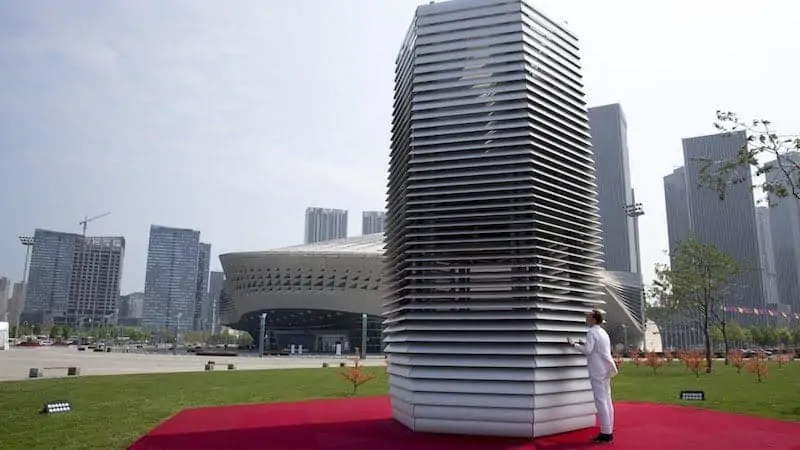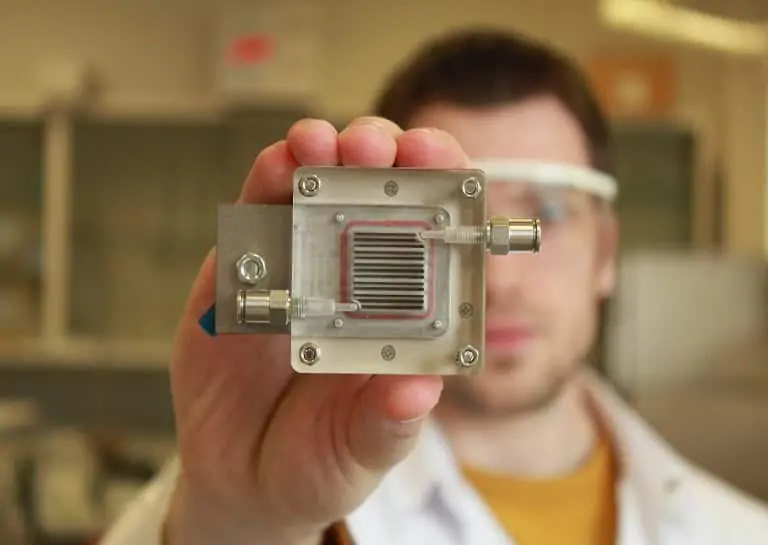Air pollution is a serious risk around the world: countries and cities are suffocated by smog and dangerous emissions that are damaging both the environment and people's health.
Between technologies, government initiatives and innovative projects we are gradually developing ways to help solve this problem. One day we could put an end to air pollution once and for all, maybe even thanks to some of the projects I listed in this post.
What are the main causes of air pollution?
In short, the main causes of air pollution are the expulsion of very small solid, liquid or gaseous polluting particles into the atmosphere. Soot, dust, nitrogen dioxide, ozone, sulfur dioxide and carbon monoxide cause damage to people and the environment.
The sources? Different. Consumption of wood and coal, vehicle exhaust, intensive farming, large fires.
The effects of air pollution? Many. In humans, eye, nose and throat irritation, breathing difficulties, cancer. On the environment, acid rain, the depletion of the ozone layer and the poisoning of animals and plants are just some of the worst effects.
Here are some interesting solutions to air pollution. A list that is far from exhaustive and in no particular order: they struck me and I decided to include them in the post.
Friends of the Earth: Citizens testing their own air quality

One of the best tools in the fight against air pollution is education. By educating people about the importance of clean air and actions to reduce their emissions, the problem of air pollution can be better addressed.
Friends of the Earth is a charity in the UK that has started providing citizens with test kits to find out more about the air quality in their local areas.
The kits include a small monitoring system and an easy-to-follow guide, so interested citizens can get accurate answers about the air they breathe.
Nanjing Vertical Forest: Growing an Urban Forest to Clean the Air

Due to highly industrialized areas, China suffers from the highest levels of air pollution in the world. Fortunately, in recent years the Celestial Empire has proposed and implemented numerous initiatives to combat air pollution and make the air healthier.
One of these is the vertical forest of Nanjing in Jiangsu province. A project by Boeri studio, which I have already covered several times on this site.
The forest is estimated to be able to absorb 25 tons of carbon dioxide and release enough oxygen to make the air 3.000 times healthier than its current state. The project features 3.000 different plant species and was completed in 2018.
AIR-INK: printing with polluted air based inks

Among the most interesting strategies to combat air pollution is to use the pollutants sucked from the air in a harmless and creative way. One such project is AIR-INK, an ink produced by carbon emissions. The product is made by Graviky Labs and was funded through Kickstarter.
People simply connect the KAALINK device to their car's exhaust pipe and after 45 minutes of driving they will get 30ml of liquid to send to the laboratory. There the liquid is purified and turned into usable ink.
Smog that becomes a jewel

La Smog-Free Tower it is a system that sucks up smog and condenses its particles into precious stones. It is the brainchild of the Dutch artist Dan Roosegaarde.
The “smog-free tower” uses relatively little energy, sending positive ions into the air that attach to dust particles. A negative ion in the vacuum then pulls the positive ions back in, bringing the particles with it.
The fine carbon particles that the tower collects can be condensed to create tiny “gems” that can be incorporated into jewelry such as rings and cufflinks. Each of the tiny stones is the equivalent of 265.000 gallons (1.000 cubic meters) of purified air.
The tower made its debut in Rotterdam in 2015 and is now used in other cities around the world.
Free Transportation: Encouraging citizens to abandon their cars

It is now well known that our cars are among the main causes of air pollution. This is why Germany devalues the possibility of making the free public transport to encourage citizens to reduce their carbon footprint by leaving their cars at home.
Although it is a great initiative, I must point out that such a project is not actually “free”, but is paid for indirectly through taxes. The announcement now dates back to February 2018 and trials were supposed to start a year later, in February 2019. Covid has "frozen everything" until (hopefully) the end of this year.
The solution did not convince everyone ("only" two-thirds of the German citizens questioned from a 2019 survey they said they were in favor). If it achieves positive results, however, it could have a huge impact on air quality in Germany.
The world's largest air purifier: cleaning the air with a skyscraper

In January 2018 in Xian, China (the city of the famous terracotta warriors) work began on the largest air purifier in the world.
The massive structure measures 328 feet (100 meters) and can improve air quality within a radius of nearly 4 miles (10 square kilometers).
The tower, as mentioned, is just one of many Chinese efforts to combat air pollution. The future will tell if this is an effective solution: if it is, I won't be surprised to see similar towers erected across the country.
The Pollution Vacuum Cleaner

What if we could place giant vacuum cleaners on top of buildings to clean the air and cut down on air pollution? It's the question that prompted it Envinity Group, a Dutch collective of inventors, to take action.
In 2016 they unveiled a huge industrial vacuum cleaner designed to remove airborne contaminants.
The system removes fine and ultrafine particles, identified as carcinogenic by the WHO. The inventors claim that the pollution vacuum cleaner it can eliminate 100% of fine particles and 95% of ultrafine particles within a range of 300 meters (984 feet).
Fuel ban: permanently eliminate fossil fuels

Removing contaminants from the air is a great short-term solution, but it doesn't address the long-term effects of carbon emissions.
One way many countries are trying to create a greener and cleaner future is the ban on cars using petrol and diesel. The United Kingdom is among the first countries to take action in this way against air pollution. The country plans to effectively ban all new petrol and diesel vehicles off the road by 2035.
With interest in electric vehicles rapidly increasing around the world, initiatives like these have a high chance of success.
CityTree: purify urban areas in a natural way

Urban areas are the hardest hit when it comes to air pollution.
The lack of green areas and trees in cities reduces the possibility of carbon dioxide absorption, leaving air quality poor.
That's why the German start-up Green City Solutions created CityTree. The CityTree is a vertical unit, a sort of billboard, incorporating mosses and lichens.
Thanks to these laborious systems, each unit can absorb up to 240 tons of carbon dioxide per year. Each of these facilities can do the job of 275 trees while requiring a fraction of the space and cost. A similar solution is that of the startup BioMiTech, it is called BioUrban 2.0 e I talked about it here.
All electric: paving the way for zero-emission vehicles

When many countries around the world finally manage to ban combustion engine vehicles from their streets, they will need many electric vehicles to replace them.
India, to name just one country, has announced that from 2030 it will only sell electric vehicles.
This would be a huge turning point for India, whose population currently suffers 1,2 million deaths a year from air pollution. The change could also save the country more than 60 billion euros in energy costs.
A bold move, which many other countries will surely follow.
Hydrogen fuel from air pollution

Today's pollution could become tomorrow's fuel thanks to research by the University of Antwerp and KU Leuven.
In May 2017, scientists discovered a surprising new method to purify the air while creating hydrogen fuel from extracted pollutants.
The researchers created a device containing a thin membrane. The purified air passes through one side of the membrane: on the other, hydrogen gas remains resulting from the degradation of contaminants. The gas obtained can be used as fuel.
The device is also powered by solar energy, which makes it completely clean.
Air pollution sensors: provide air quality data everywhere

One problem that has stalled the fight against air pollution is the lack of comprehensive data.
While urban areas are well tested for their air quality, suburban and rural areas have fewer resources and less data available.
In India, government initiatives are working to install pollution sensors in all areas of the country to better detect and manage air pollution.
A new series of cutting-edge sensors was certified in 2019 and has already provided valuable data in the fight against air pollution.
Smart streetlights and sensors: Working in tandem to clean the air

The Czech Republic has announced that it will install carbon dioxide monitors inside smart street lights in its capital, Prague.
The sensors will be able to provide real-time information on the areas most affected by air pollution, enabling more effective strategies to combat it and letting residents know which areas of the city are at greatest risk to their health.
Anti-smog cannons: reduce air pollution from the air

The idea of a anti-smog cannon it might sound ridiculous, but it could be an effective way to clean up areas affected by heavy air pollution.
The government of Delhi, India, tested the “weapons” with satisfactory results, and has been deploying them for a year to help reduce dangerous smog levels in Anand Vihar.
The guns work by spraying water vapor into the air, which absorbs pollutants before falling back to the ground as rain.
While it doesn't completely remove pollutants, it's an effective short-term solution for heavy smog days. Days when breathing the air could present a serious health risk to residents.
Google Maps of Air Pollution

This, more than a project, is an experiment that has provided interesting perspectives. 5 years ago Google Street View cars traveled in a limited area of the USA also taking air samples.
In this way they collected data to create a "visual" of the map that also included air pollution levels.
If cars were equipped with a sensor that sends data to a system like Google's, we would have a real-time map of the air and its fluctuations anywhere in the world.


